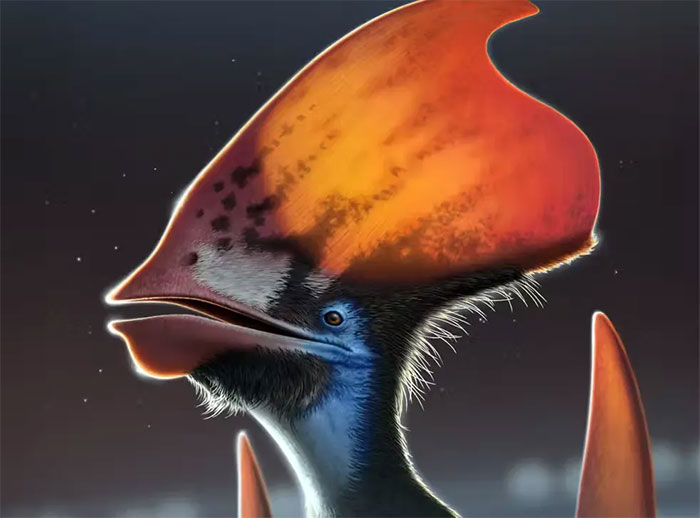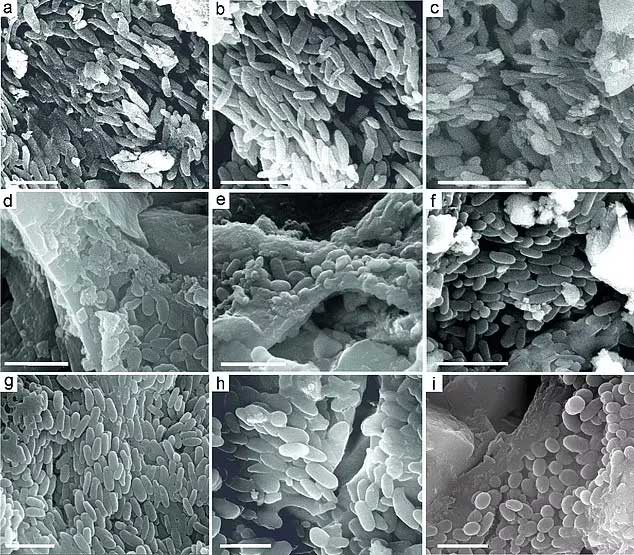A recent study reveals that ancient flying reptiles – pterosaurs – had feathers and could control the color of their plumage to attract mates or keep cool. Pterosaurs lived alongside dinosaurs during the Triassic, Jurassic, and Cretaceous periods, approximately 230 to 66 million years ago.
It is known that pterosaurs had a fine layer of hair-like structures called pycnofibres, but whether these were “true” feathers has been a subject of debate until recently.

Pterosaurs lived alongside dinosaurs during the Triassic, Jurassic, and Cretaceous periods.
Scientists from University College Cork conducted research on a 115-million-year-old crest fossil of the pterosaur species Tupandactylus imperator from northeastern Brazil. This dinosaur had a wingspan of nearly 4 meters—about the size of a light aircraft—and is famous for its bizarre, gigantic head crest.
The research team discovered that the underside of the crest had a fuzzy fringe, consisting of both stiff hair-like structures and filamentous feathers.
“We were truly surprised to discover this. For decades, paleontologists have debated whether pterosaurs had feathers. Now, everything is clear; the feathers in our specimen have ended that debate because they are clearly branched, just like those of modern birds,”
The scientific team examined the feathers using high-powered electron microscopy and found “melanosomes” inside – pigment granules of melanin. The melanosomes varied in shape depending on the type of feather.

Study of feathers under high-powered electron microscopy. Scientists found melanosomes in soft tissues (a – c), melanosomes extending from single fibers (d – f), and egg-shaped melanosomes from filamentous feathers (g – i)
“In modern birds, feather color is closely related to melanosome shape. Since pterosaur feathers have many different melanosome shapes, I think they must have had a genetic mechanism to control feather color. This characteristic is crucial as it impacts how pterosaurs grew their juvenile feathers.”
The findings also suggest that although these feathers were not used for flying, they may have served as a form of visual communication.
Professor Mike Benton from the University of Bristol, who was not involved in the study, stated that pterosaurs may have used their feathers as ‘signals to other individuals of the same species.’
The species Tupandactylus and its relatives all had crests of different shapes, with this structure originating from skin extending over the bony segments. Each species exhibited distinct, irregularly colored spots.
These crests may have been used to signal between males and females before mating. This characteristic is similar to some bird species that use colorful tail fans, wings, and crests to attract mates.
The fossil sample has now returned to its home in Brazil for public display and further research.


















































